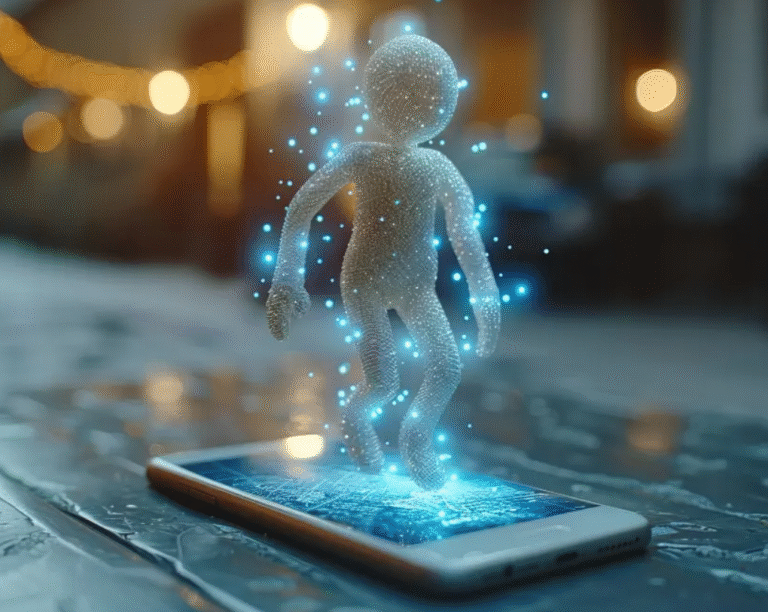Tech giants are actively envisioning a future beyond smartphones, investing billions in innovative technologies that could redefine how we interact with the digital world. While smartphones will remain central for the near future, companies like Apple, Meta, Google, and Microsoft are betting on more seamless, integrated, and immersive platforms that could eventually replace the handheld device as the primary computing tool.
The Shift to a Post-Smartphone Era
The smartphone market is maturing, with global growth slowing down. According to Statista, worldwide smartphone shipments grew only 0.9% in 2024, signaling market saturation. Tech giants are now exploring ambient computing, where technology is always on, contextually aware, and integrated into our environment—no pocket device required.
This shift focuses on making digital interaction natural and intuitive, moving beyond the physical limitations of handheld devices. Key areas of investment include:
1. Augmented Reality (AR) & Virtual Reality (VR)
AR and VR are perhaps the most visible signs of the post-smartphone era. Companies are developing smart glasses and immersive headsets that overlay digital information onto the real world or create fully virtual environments.
Apple: With the Vision Pro headset, Apple leads in spatial computing, aiming to extend the Apple ecosystem into a new dimension. Rumors suggest lighter AR glasses that could eventually replace the iPhone for many tasks (Apple Insider).
Meta: Meta has invested over $50 billion in Reality Labs, producing Meta Quest headsets and partnering with Ray-Ban for smart glasses. Their goal is to make the metaverse accessible to the masses (Reuters).
2. Artificial Intelligence (AI) as the Central Layer
AI is no longer just a digital assistant; it is the software backbone of next-gen devices. From proactive contextual support to real-time translation, AI is transforming how users interact with technology.
Google: Leveraging AI through projects like Project Astra and Gemini AI models, Google is embedding AI into smart glasses and other devices, positioning AI as the central hub of interaction.
OpenAI: Through partnerships and AI-native devices, OpenAI is helping develop hardware designed for conversational and ambient AI rather than touchscreen adaptation.
3. Brain-Computer Interfaces (BCIs)
Neuralink and other innovators are pioneering BCIs to create a direct link between the brain and digital devices. This could allow hands-free control and immersive experiences, potentially reducing the need for physical hardware (Neuralink).
Key Players and Their Strategies
| Company | Focus Area | Strategy |
|---|---|---|
| Apple | AR/VR | High-end spatial computing and seamless ecosystem integration |
| Meta | Metaverse & AR | Mass adoption of smart glasses and immersive platforms |
| AI-powered AR | Context-aware AI companions on wearable devices | |
| Microsoft | Enterprise MR | Mixed reality HoloLens for training, design, and collaboration |
| Neuralink | BCIs | Hands-free brain-device integration |
| OpenAI | AI-native devices | Ambient, conversational AI hardware |
The Promise and the Peril
The post-smartphone world promises:
Hands-free, intuitive interaction: Real-time navigation overlays, instant translation, smart home control by thought.
Seamless integration: Devices embedded into daily life, reducing screen fatigue.
Challenges include:
Privacy and data security risks
Device intrusiveness or distraction
Comfort, battery life, and cost issues
Mass adoption barriers
Despite these hurdles, tech giants continue to invest heavily in this transformation. The next era of computing is about more than just a new gadget—it’s a complete shift in how humans interact with information and each other.
 Market Outlook
Market Outlook
Global shipments of AR/VR headsets are projected to reach 90 million units by 2026, up from 28 million in 2023 (Statista).
Analysts predict the post-smartphone era could redefine personal computing within the next decade, as smart glasses, AI companions, and BCIs gain traction.
 Conclusion
Conclusion
Tech giants envision future beyond smartphones, where devices are immersive, AI-driven, and seamlessly integrated into daily life. While challenges remain, the combination of AR/VR, AI, and BCIs marks the dawn of a new era—one where the handheld smartphone may no longer dominate our digital interactions.

